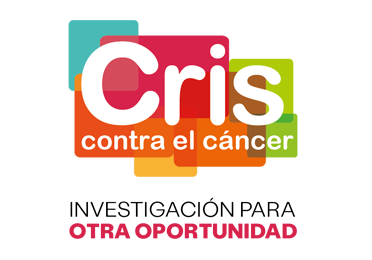
- The use of PARP inhibitors has proven effective in treating patients with homologous recombination deficiency (HRD) tumours such as some types of ovarian, breast, prostate and pancreas cancer.
- Tools that currently help to identify which patients are more sensitive to this type of treatment have low specificity in advanced cancers. The Vall d’Hebron Institute of Oncology (VHIO) has developed a new test capable of identifying HRD tumours by detecting RAD51, a protein involved in repairing DNA.
- This test has been developed with the support of the CaixaResearch Validate and Consolidate Programs of ‘la Caixa’ Foundation, which have allowed it to be validated in the clinical setting. The development of the RAD51 test has also received funding from the El Corte Inglés through La Asociación Española Contra el Cáncer and the ISCIII, among others.
- A final study with patient-derived laboratory models has enabled us to take another step in validating this biomarker.
- A clinical trial, RADIOLA, will begin to demonstrate clinical validity by researching how efficient the test is in identifying patients with advanced breast cancer sensitive to PARP inhibitors.
Barcelona, 15 April 2022– The path of precision medicine ranges from identifying therapeutic targets to implementing new medication in clinical practice. The refinement of patient selection biomarkers, which can improve a patient’s chance to respond to new medication, is currently in this long and repetitive process The Vall d’Hebron Institute of Oncology (VHIO), part of the Vall d’Hebron Campus, has been working for some time on developing a test based on detecting nuclear foci of RAD51, a protein involved in repairing DNA.
This new research led by Dr Violeta Serra, head of the VHIO Experimental Therapy Group, and Dr Judith Balmaña, head of the VHIO Hereditary Cancer Genetics Group, in collaboration with other specialists from VHIO and Vall d’Hebron University Hospital (HUVH), has now proven the precision of this tool to predict response to PARP inhibitors and platinum-based chemotherapy. “Specifically, this work has served to demonstrate the validity of the cut-off point from which we will investigate if patients are sensitive to these drugs”, comments Dr Violeta Serra. This paper has been published in Cancer Research.
A new step forward in validation
Several studies to date had served to study this biomarker’s capacity to predict response to platinum-based chemotherapy or to PARP inhibitors, medications approved for some ovarian, breast, prostate and pancreas cancers. “These tumours have in common that they present genetic alterations affecting DNA repair by means of the mechanism called homologous recombination, such as those with mutations in the BRCA1, BRCA2 or PALB2 genes. Detecting nuclear foci of RAD51 in tumour cells is a marker of this functionality”, explains Dr Violeta Serra.
To validate the biomarker cut-off point and compare the performance of this test with other methods to detect deficiency in this DNA repair mechanism (called “HRD” tests), 109 PDX models were used, mostly breast cancer but also some high-grade serous ovarian and pancreas cancer models. “To verify the validity of the test, efficiency was compared with other biomarkers currently used, such as the presence of mutations, sensitivity to platinum or presence of genomic scars”, adds Dr Serra.
The test improves response prediction
Results have served to prove that the quantification of RAD51 is a more precise biomarker than those currently used in clinical practice. Thus, it has been proven that the RAD51 test predicted the response to PARP inhibitors in 95% of cases, while HRR gene mutations only achieved 67% and HRD genomic analysis 71%. “It is also important to note that the RAD51 test proved to be capable of identifying dynamic changes in HRD status when the cancer acquires resistance to PARP inhibitors, which is not possible with genomic tests as they are static”, added Dr Violeta Serra.
In short, results obtained in the study have served to validate the RAD51 biomarker cut-off point to aid in the stratification and selection of patients, in addition to confirming the high predictive value of this tool compared to other HRD tests. It is important to stress that RAD51 tests not only help identify patients with BRCA1/2 alterations that would make them more sensitive to PARP inhibitors, but also those who have epigenetic alterations in the pathway that are not detected by a mutation. This makes them a valuable aid in decision making and can extend the population of patients who can benefit from these medications.
RADIOLA study
This study will enable us to continue the prospective validation and qualification of RAD51 tests in cohorts of patients with advanced breast or prostate cancer. The new clinical study, RADIOLA, led by SOLTI, with principal investigators Dr Judith Balmaña, head of the VHIO Hereditary Cancer Genetics Group and Oncologist at the Vall d’Hebron University Hospital Breast Cancer Unit, and Dr Aleix Prat, head of the Translational Genomics and Targeted Therapies in Solid Tumours Group at IDIBAPS, will research the predictive role of the test in patients with metastatic breast cancer.
The RADIOLA study will treat patients with breast cancer with olaparib, a PARP inhibitor already approved by the European Medicines Agency (EMA) for treating breast cancer, but not yet available in Spain for this purpose. “Participating in this study will be a great opportunity for patients bearing germinal alterations in BRCA1/2 and will also enable us to prove in clinical practice the efficiency of the RAD51 test to identify patients with no genetic alterations who can benefit from these drugs”, explained Dr Judith Balmaña.
This test has been developed with the support of the CaixaResearch Validate and Consolidate Programs of the ‘la Caixa’ Foundation, which have allowed it to be validated in the clinical setting. The development of the RAD51 test has also received funding from the El Corte Inglés through La Asociación Española Contra el Cáncer and the ISCIII, among others.
Reference:
Benedetta Pellegrino, Andrea Herencia-Ropero, Alba Llop-Guevara, Flaminia Pedretti, Alejandro Moles-Fernández, Cristina Viaplana, Guillermo Villacampa, Marta Guzman, Olga Rodriguez, Judit Grueso, José Jimenez, Enrique J. Arenas, Andrea Degasperi, João Miguel Lopes. Dias, Josep V. Forment, Mark J. O’Connor, Olivier Déas, Stefano Cairo, Yinghui Zhou, Antonino Musolino, Carlos Caldas, Serena Nik-Zainal, Robert B. Clarke, Paolo G. Nuciforo, Orland Díez, Xavier Serres-Créixams, Vicente Peg, Martin Espinosa-Bravo, Teresa Macarulla, Ana Oaknin, Joaquin Mateo, Joaquín Arribas, Rodrigo Dienstmann, Meritxell Bellet, Mafalda Oliveira, Cristina Saura, Sara Gutiérrez-Enríquez, Judith Balmaña, Violeta Serra; Preclinical in vivo validation of the RAD51 test for identification of homologous recombination-deficient tumors and patient stratification. Cancer Res 2022; canres.2409.2021. https://doi.org/10.1158/0008-5472.CAN-21-2409











